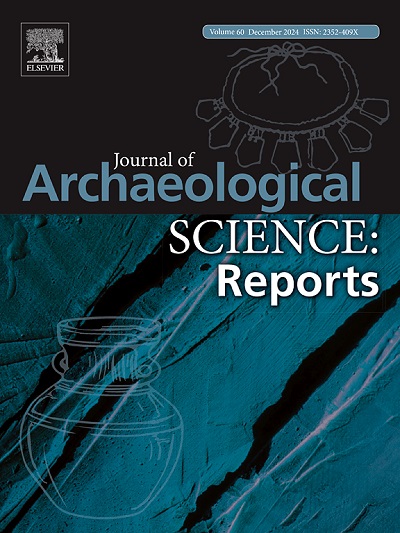来自Palaepaphos-Skales的火化人类遗骸:塞浦路斯铁器时代的案例研究
IF 1.5
2区 历史学
0 ARCHAEOLOGY
引用次数: 0
摘要
本文通过检查Palaepaphos-Skales墓地的火化人类遗骸,探讨了早期铁器时代塞浦路斯火化的实践。火葬在塞浦路斯很少见,最早出现在铁器时代初期。大多数火葬是在以人葬为主的墓地中孤立发生的。此外,塞浦路斯很少有火化的人类遗骸从生物考古学的角度得到彻底检查。即使在进行生物考古研究的情况下,也很少注意到与火或热暴露有关的埋藏学过程及其对火化过程本身的潜在启示。Palaepaphos-Skales是一个大型墓地,包含数百个可以追溯到铁器时代(Cypro-Geometric period)上半期的坟墓,其中至少发现了11个骨灰盒火葬,为火葬作为殡葬实践的特定地点调查提供了可能性。对7个骨灰盒火葬进行了生物考古分析,以评估火化个体的人口统计学、生物学和地语学特征。结果表明,这些个体暴露在相似的温度条件下,并表明火化可能发生在尸体仍有肉的时候,死后不久。这种做法似乎只适用于成年人或成熟的个人。尽管来自斯科尔斯的火葬与更广泛的东地中海地区的火葬有相似之处,但证据表明,尽管火葬在塞浦路斯很少见,但它仍然深深植根于当地的葬礼传统。火葬的人被视为社区不可或缺的成员,就像那些被埋葬的人一样。本文章由计算机程序翻译,如有差异,请以英文原文为准。
Cremated human remains from Palaepaphos-Skales: A case study from the iron age of Cyprus
This paper explores the practice of cremation in Early Iron Age Cyprus by examining cremated human remains from the Palaepaphos-Skales necropolis. Cremation was rare in Cyprus, first appearing at the onset of the Iron Age. Most cremation burials are isolated occurrences within cemeteries where inhumation predominated. Moreover, few cremated human remains in Cyprus have been thoroughly examined from a bioarchaeological perspective. Even in cases where bioarchaeological studies have been conducted, little attention has been given to the taphonomic processes related to fire or thermal exposure and their potential to shed light on the cremation process itself. Palaepaphos-Skales is a large necropolis containing hundreds of tombs dating to the first half of the Iron Age (Cypro-Geometric period), within which at least eleven urn cremation burials have been discovered, offering the possibility for a site-specific investigation of the use of cremation as a funerary practice. Bioarchaeological analysis of seven urn cremation burials was carried out to assess the demographic, biological, and taphonomic characteristics of the cremated individuals. The results show that the individuals were exposed to similar thermal conditions and suggest that the cremations likely occurred while the bodies were still fleshed, soon after death. The practice appears to have been reserved exclusively for adults or mature individuals. While the cremations from Skales share similarities with those in the wider eastern Mediterranean region, the evidence suggests that, despite its rarity in Cyprus, cremation remained deeply rooted in local funerary traditions. Cremated individuals were treated as integral members of the community, just like those who were inhumed.
求助全文
通过发布文献求助,成功后即可免费获取论文全文。
去求助
来源期刊

Journal of Archaeological Science-Reports
ARCHAEOLOGY-
CiteScore
3.10
自引率
12.50%
发文量
405
期刊介绍:
Journal of Archaeological Science: Reports is aimed at archaeologists and scientists engaged with the application of scientific techniques and methodologies to all areas of archaeology. The journal focuses on the results of the application of scientific methods to archaeological problems and debates. It will provide a forum for reviews and scientific debate of issues in scientific archaeology and their impact in the wider subject. Journal of Archaeological Science: Reports will publish papers of excellent archaeological science, with regional or wider interest. This will include case studies, reviews and short papers where an established scientific technique sheds light on archaeological questions and debates.
 求助内容:
求助内容: 应助结果提醒方式:
应助结果提醒方式:


